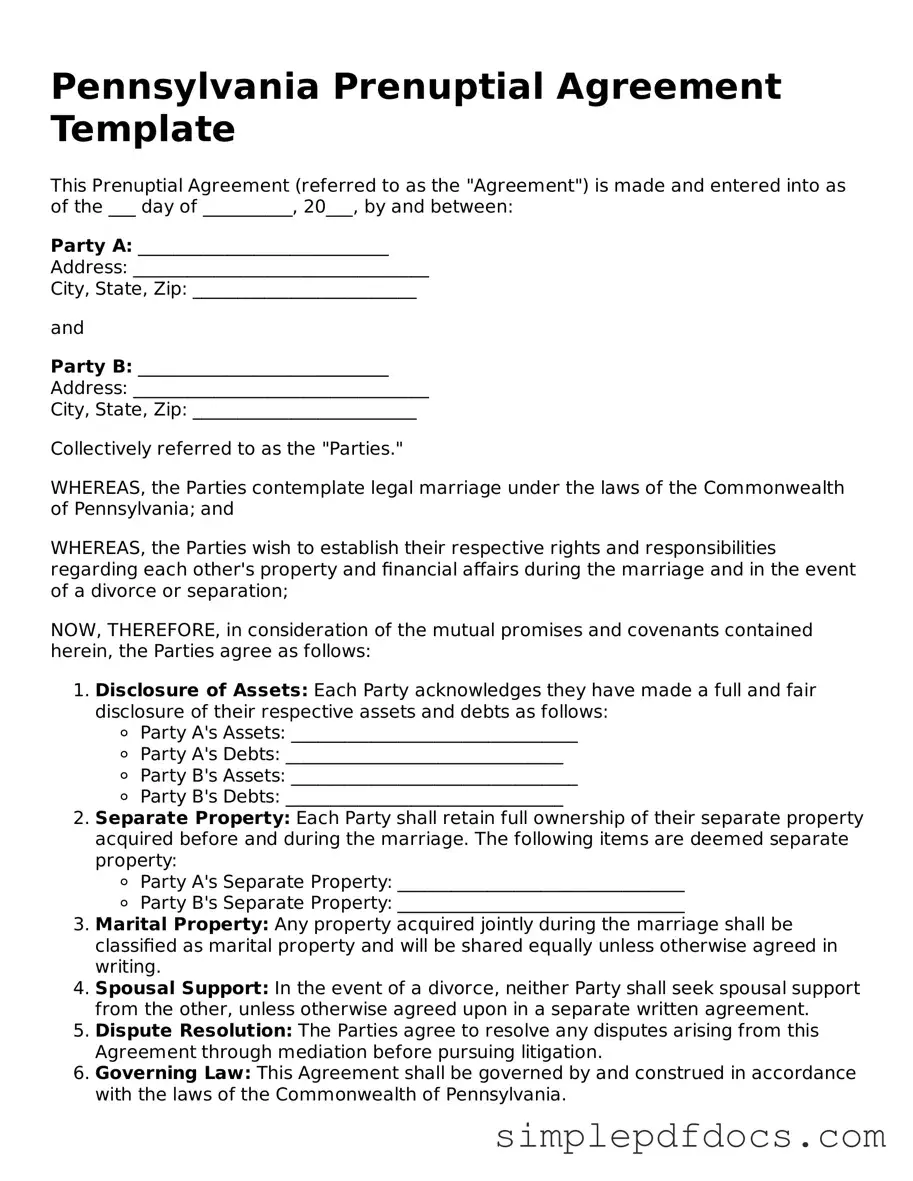Legal Prenuptial Agreement Document for the State of Pennsylvania
A Pennsylvania Prenuptial Agreement form is a legal document that outlines the terms of property division and financial responsibilities for a couple in the event of divorce or separation. This agreement allows both parties to protect their individual assets and clarify expectations before entering into marriage. By addressing these matters upfront, couples can foster transparency and reduce potential conflicts in the future.
Get Document Here
